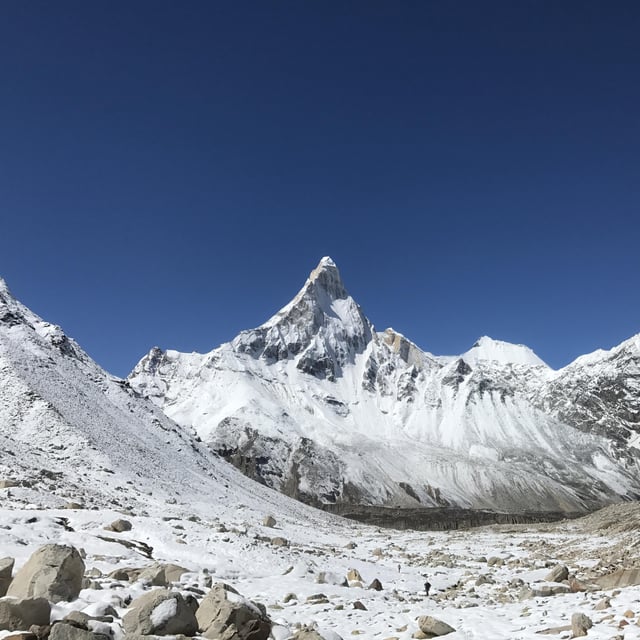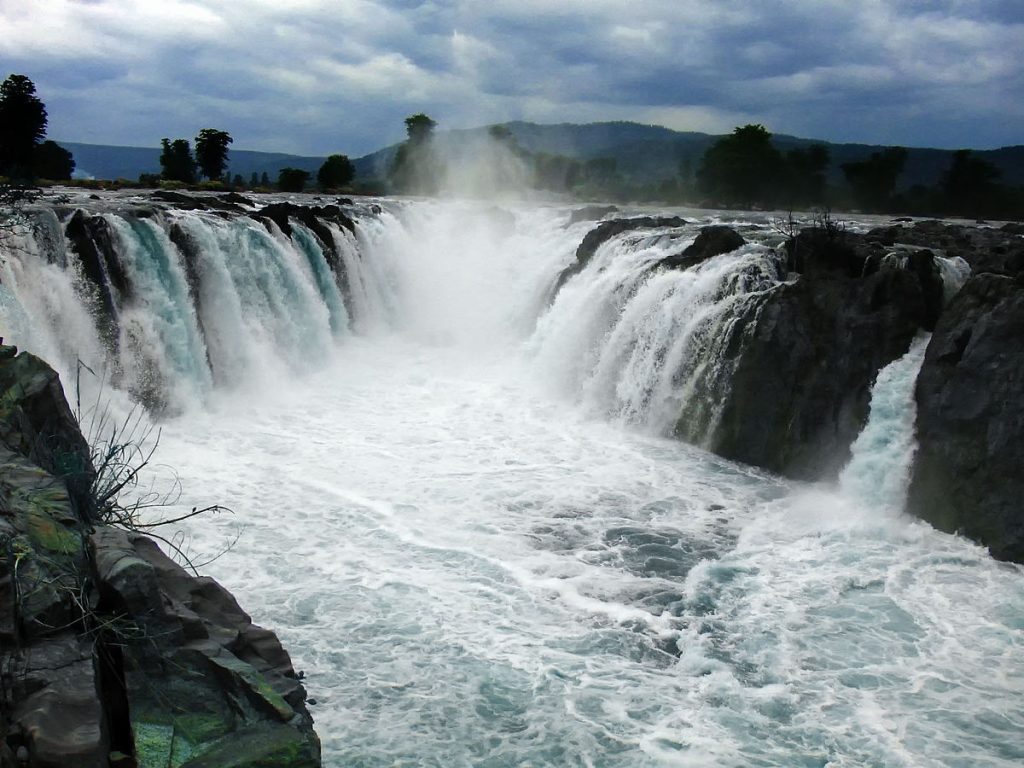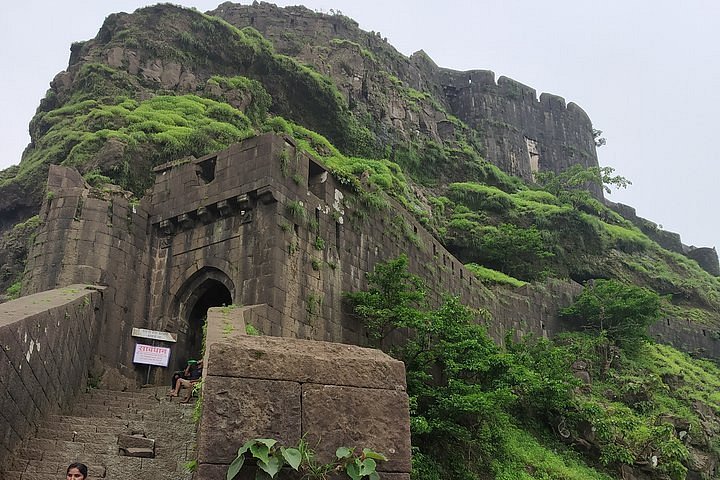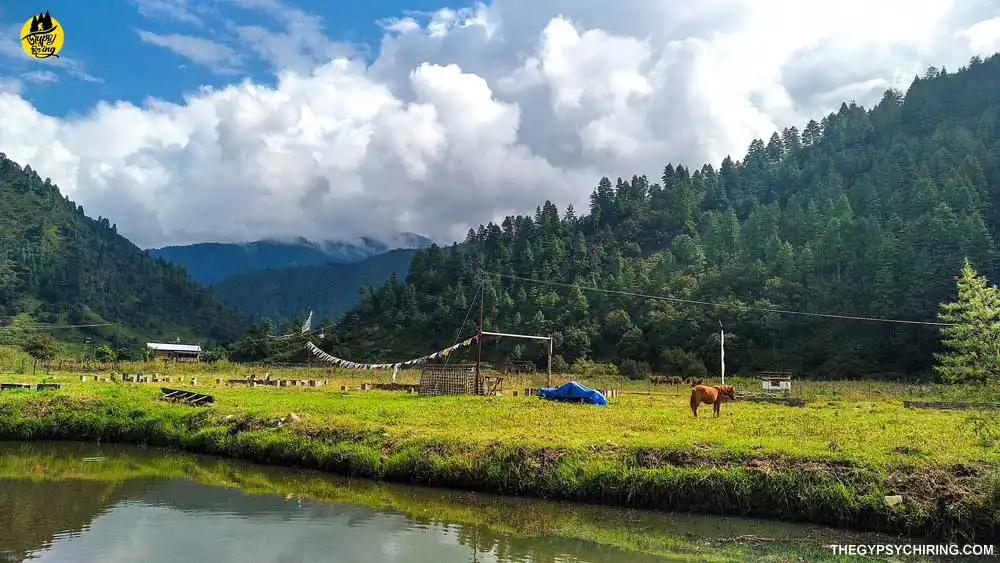India’s Ellora and Ajanta Caves are a testament to ancient artistry. These caves showcase India’s rich history and culture.
Nestled in the Maharashtra state, the Ellora and Ajanta Caves are stunning examples of rock-cut architecture. These caves, dating back to ancient times, are UNESCO World Heritage Sites. The Ellora Caves are known for their intricate carvings and vast complex, featuring Buddhist, Hindu, and Jain monuments.
Ajanta Caves, on the other hand, boast beautiful frescoes and sculptures depicting Buddhist tales. Exploring these caves offers a journey through time, revealing the artistic and spiritual achievements of ancient India. Whether you’re a history buff or an art lover, the Ellora and Ajanta Caves promise a captivating experience. Let’s delve into the wonders of these magnificent caves.
:max_bytes(150000):strip_icc()/AjantaCaves-India-AnnaHaines127-8a5d29273ba34eb4a938557b9a10b2e3.jpg)
Credit: www.tripsavvy.com
History And Discovery
Nestled in the heart of Maharashtra, India, the Ellora Ajanta Caves have long fascinated historians, archaeologists, and curious travelers. These caves, adorned with intricate carvings and paintings, offer a window into the past, revealing the rich tapestry of India’s cultural and religious history. But how were these marvelous structures discovered? Let’s delve into the captivating history and discovery of the Ellora Ajanta Caves.
Early Discoveries
The discovery of the Ajanta Caves dates back to the early 19th century, when a British officer, John Smith, stumbled upon these hidden treasures during a hunting expedition in 1819. Imagine the surprise and awe that must have gripped him upon encountering the magnificent cave paintings and sculptures in the middle of a dense jungle! This accidental discovery sparked a flurry of interest and led to further exploration.
The Ellora Caves, on the other hand, were known to locals for centuries. However, it was only in the early 20th century that they garnered significant attention from the international archaeological community. The sheer scale and grandeur of these rock-cut temples caught the eyes of historians and enthusiasts alike.
Archaeological Excavations
The systematic excavation and study of the Ajanta Caves began shortly after their rediscovery. Archaeologists and scholars painstakingly documented the paintings and sculptures, unearthing invaluable information about the art and culture of ancient India. The caves, dating from the 2nd century BCE to about 480 CE, are a testament to the craftsmanship and devotion of their creators.
Similarly, the Ellora Caves underwent extensive archaeological excavations in the mid-20th century. These efforts revealed a series of 34 caves, each more impressive than the last. The caves, which were built between the 6th and 10th centuries, include Buddhist, Hindu, and Jain temples, showcasing a harmonious blend of different religious traditions.
In both cases, the excavations were not just about unearthing physical artifacts; they were about piecing together the stories and lives of the people who created these masterpieces. Today, the Ellora and Ajanta Caves stand as a testament to India’s rich cultural heritage, attracting visitors from all corners of the globe.
:max_bytes(150000):strip_icc()/GettyImages-469869640-6c29b1f8f7554daa9094d6b5f39a839a.jpg)
Credit: www.tripsavvy.com
Architectural Marvels
Ellora and Ajanta Caves are known for their stunning architecture. These ancient sites showcase the brilliance of Indian craftsmanship. They are a testament to India’s rich cultural heritage.
Rock-cut Architecture
The caves are carved from solid rock. This technique is called rock-cut architecture. It involves removing rock to create space. This method is very challenging and requires skill.
Each cave is unique. They feature intricate carvings and sculptures. The detailed artwork depicts stories from ancient times. The caves reflect the artistry of the craftsmen. Their work has stood the test of time.
Structural Design
The structural design of the caves is impressive. They include temples, monasteries, and halls. These structures were created for worship and meditation. The design ensures stability and durability.
The caves have pillars and arches. These elements add to their grandeur. The interiors are spacious and well-planned. The architects paid attention to every detail. This makes the caves an architectural wonder.
Ellora and Ajanta Caves are a blend of creativity and engineering. Their design continues to inspire visitors from around the world.
Ellora Caves
The Ellora Caves in India are a magnificent blend of art and history. These caves are located near Aurangabad in Maharashtra. They showcase the rich cultural heritage of ancient India. The site features a collection of 34 caves. Each cave is a masterpiece carved into the hillside. The caves include temples and monasteries from three different religions. Visitors can explore Hindu, Buddhist, and Jain monuments within the complex.
Hindu Temples
The Hindu temples at Ellora are a marvel of ancient engineering. Cave 16, known as the Kailasa Temple, is the most famous. It is dedicated to Lord Shiva and carved from a single rock. The temple is a symbol of spiritual and architectural excellence. It features intricate carvings and towering pillars. Other Hindu caves include Cave 14 and Cave 15. These caves depict various Hindu deities and mythological stories.
Buddhist Monasteries
The Buddhist monasteries at Ellora are serene and peaceful. Cave 10, the Vishvakarma Cave, is a notable example. It is also known as the Carpenter’s Cave. This cave has a large prayer hall with a seated Buddha statue. The Buddhist caves served as meditation halls and living quarters. Cave 12, Cave 11, and Cave 5 are other important Buddhist caves. They have stupas, shrines, and intricate wall carvings.
Jain Shrines
The Jain shrines at Ellora are smaller but equally impressive. They reflect the Jain philosophy of simplicity and devotion. Cave 30, known as the Chhota Kailasa, is dedicated to Lord Mahavira. It features detailed carvings of Tirthankaras. Cave 32 and Cave 33 are other significant Jain caves. These caves have beautiful statues and intricate designs. The Jain caves offer a glimpse into the spiritual practices of Jainism.
Ajanta Caves
The Ajanta Caves, located in Maharashtra, India, are a marvel of ancient architecture. These rock-cut caves date back to the 2nd century BCE. They are known for their intricate carvings and beautiful paintings. These caves are a UNESCO World Heritage Site. They offer a glimpse into ancient Indian history and art.
Buddhist Heritage
Ajanta Caves are a testament to India’s rich Buddhist heritage. Monks used these caves for meditation and studies. The caves served as a place of worship and learning. You can find many sculptures of Buddha here. They reflect the spiritual atmosphere of the time. The caves played a vital role in spreading Buddhist teachings.
Cave Paintings
The cave paintings at Ajanta are simply stunning. These artworks depict scenes from the life of Buddha. They also show stories from Jataka tales. The paintings use natural pigments. They have remained vibrant over the centuries. The detailing in the paintings is exquisite. They offer a window into ancient artistic techniques. The cave paintings are a visual treat for art lovers.
Art And Iconography
The Ellora and Ajanta Caves in India are famous for their art and iconography. These caves showcase the brilliance of ancient Indian artists. Their creations span across centuries and cultures. Visitors can witness vibrant murals, intricate frescoes, and detailed sculptures.
Murals And Frescoes
The murals in Ajanta are stunning. They depict scenes from the life of Buddha. The artists used natural pigments for these paintings. The colors remain vibrant even today. Frescoes tell stories of ancient times. They show the skills of the craftsmen. Each stroke and color choice has a meaning.
The themes in these murals are diverse. They portray gods, kings, and common folks. The expressions on faces are vivid. The details in the backgrounds are meticulous. These paintings are not just art; they are historical records.
Sculptural Art
The sculptural art in Ellora is awe-inspiring. The Kailasa temple is a prime example. It is a massive monolithic structure. Carved from a single rock. The precision is remarkable. The temple features many deities and mythological figures. Each sculpture tells a story.
The attention to detail is evident. From the folds in the garments to the expressions on faces. These sculptures are masterpieces. They reflect the religious and cultural values of the time. They also show the advanced skills of ancient Indian sculptors.
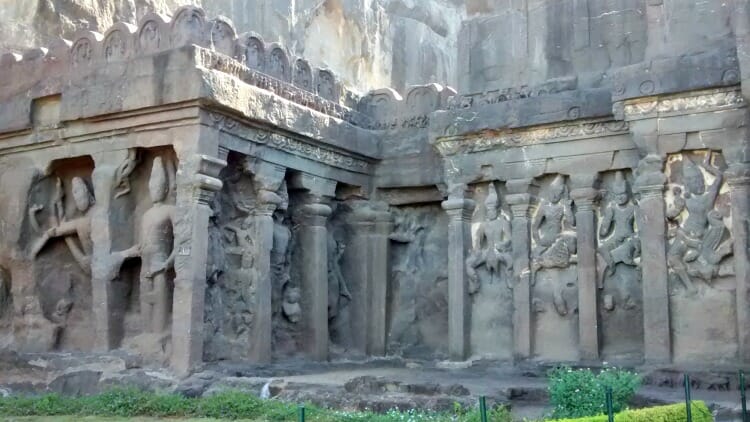
Credit: solotravelerworld.com
Cultural And Religious Impact
The Ellora Ajanta Caves in India are more than just historical sites. These ancient caves have left a lasting impact on culture and religion. They have inspired countless generations. Their influence can still be seen today.
Pilgrimage Sites
The Ellora Ajanta Caves hold special meaning for many. Pilgrims visit these caves to connect with their faith. The caves are a place of worship and reflection. They offer a space for spiritual growth. Both Buddhist and Hindu followers consider these caves sacred. The detailed carvings and statues inside the caves depict deities and stories. These images help devotees feel closer to their beliefs.
Cultural Influence
The caves also greatly impact art and culture. Artists draw inspiration from the carvings and paintings. The detailed artwork in the caves showcases ancient techniques. These techniques still influence modern art. The stories carved into the walls tell tales of history and mythology. They keep ancient traditions alive. Many cultural events and festivals celebrate these rich traditions. The caves are a testament to human creativity and devotion.
Preservation Efforts
The Ellora and Ajanta Caves are more than just historical marvels. They are treasures that need our care. Preserving these ancient wonders is not easy. It takes dedication, technology, and a lot of teamwork. Let’s dive into how these magnificent sites are being preserved for future generations.
Conservation Techniques
Keeping the Ellora and Ajanta Caves in good shape involves several techniques. Experts use modern technology to monitor the condition of the caves. They look for cracks, water damage, and other issues. Here are some key techniques:
- Regular Monitoring: Experts check the caves frequently to catch problems early.
- Climate Control: Humidity and temperature are controlled to prevent damage.
- Cleaning: Dirt and algae are removed carefully without harming the ancient art.
These techniques ensure the caves remain as beautiful as ever. It’s like giving them a regular health check-up!
Government Initiatives
The Indian government plays a big role in preserving the Ellora and Ajanta Caves. They have launched several initiatives:
- Funding: The government provides funds for preservation projects.
- Research: Experts conduct research to find better ways to preserve the caves.
- Awareness Programs: Programs are run to educate people about the importance of preservation.
These initiatives show the commitment to keeping these historical sites intact. After all, these caves are not just part of India’s heritage; they are a treasure for the whole world.
In conclusion, preserving the Ellora and Ajanta Caves is a task that requires constant effort and dedication. Thanks to advanced conservation techniques and robust government initiatives, these ancient wonders continue to stand tall, narrating stories of a glorious past. So, next time you visit, remember the hard work that goes into preserving these incredible sites!
Visitor Information
Visiting the Ellora Ajanta Caves is a remarkable experience. To make the most of your trip, it’s essential to know some key visitor information. This includes details about tourist facilities and the best time to visit. Let’s dive in.
Tourist Facilities
The Ellora Ajanta Caves offer various tourist facilities. There are restrooms and drinking water stations. These are located at several points. You can also find small eateries and souvenir shops. These offer snacks and local crafts. For a comfortable visit, wear good walking shoes. The paths can be uneven and steep in some areas.
Guided tours are available at the site. These provide valuable insights into the history and art of the caves. Audio guides are also an option. They offer flexibility and detailed information. Parking facilities are ample and easy to access. Electric buses shuttle visitors between the main sites, making it convenient.
Best Time To Visit
The best time to visit the Ellora Ajanta Caves is between November and March. During these months, the weather is pleasant and cool. Avoid the monsoon season from June to September. The heavy rains can make the site slippery and less accessible.
Weekdays are less crowded than weekends. This allows for a more peaceful exploration. Early mornings offer the best light for photography. The caves open at 9 AM, so plan to arrive early. This ensures you have ample time to explore without the midday heat.
Frequently Asked Questions
Which City Is Closest To Ajanta And Ellora Caves?
Aurangabad is the closest city to the Ajanta and Ellora caves. It is approximately 100 kilometers away.
What Are Ajanta And Ellora Famous For?
Ajanta and Ellora are famous for their stunning rock-cut caves. They feature intricate sculptures, paintings, and ancient Buddhist, Hindu, and Jain temples.
Which Cave Is Better, Ajanta Or Ellora?
Ajanta and Ellora Caves offer unique experiences. Ajanta is famous for its stunning paintings. Ellora showcases impressive sculptures. Both are worth visiting. Choose based on your interest in art or architecture.
How Many Days Do You Need In Ajanta Ellora?
You need 2-3 days to explore Ajanta and Ellora Caves fully. This allows ample time to appreciate their beauty.
Conclusion
The Ellora Ajanta Caves are truly a wonder. Their beauty and history captivate visitors. Each cave tells a unique story. The intricate carvings reflect ancient art. Visiting these caves is like stepping back in time. You will be amazed by their grandeur.
Plan your trip to explore these incredible sites. The experience will be unforgettable. Enjoy the rich cultural heritage of India. The Ellora Ajanta Caves await your discovery.

